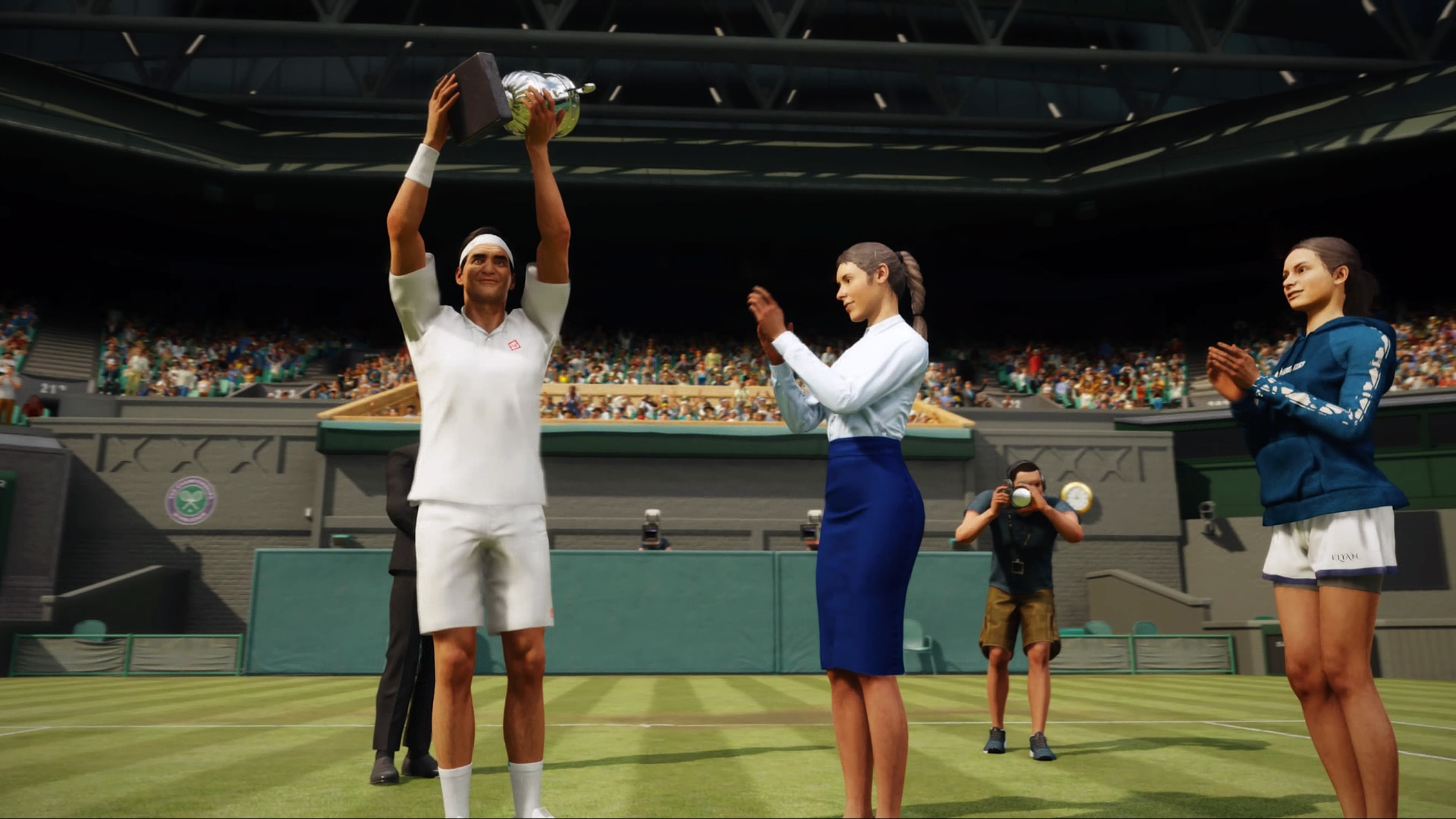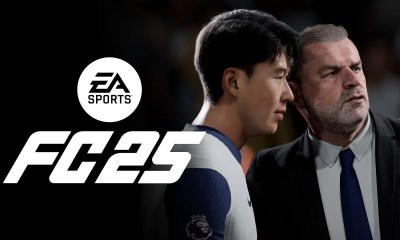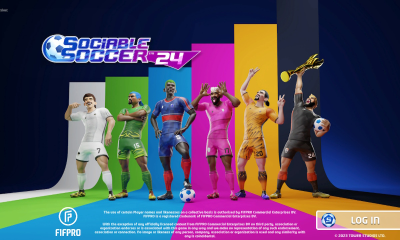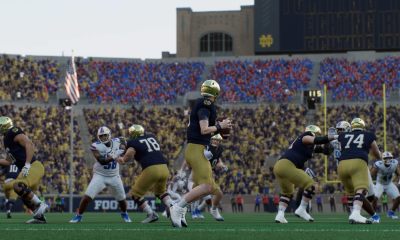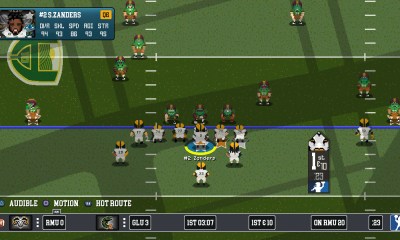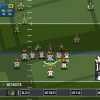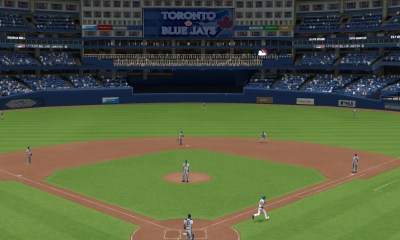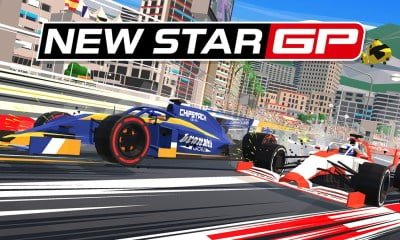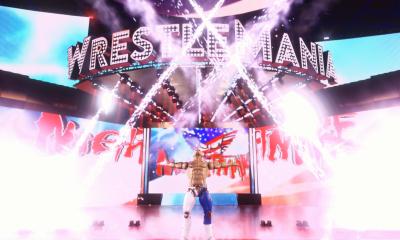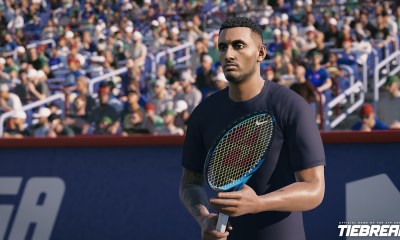Review
TopSpin 2K25 Review - A Winning Return for the Series
It’s been 13 long years and two generations of consoles since Top Spin 4 was released back in 2011 and yet, for many, it still retains the coveted title as the best tennis video game of all time. TopSpin 2K5 is now here to try and reach for that title.
While there have been a host of challengers in recent years like AO Tennis and its sequel on consoles along with Tiebreak on Steam more recently with its official ATP and WTA licensing, they have all looked more like pretenders compared to the depth of the gameplay that Top Spin 4 showcased. After that lengthy wait, TopSpin 2K25 has finally been unveiled by 2K and developer Hangar 13 and, despite an incredible amount of hype and understandably lofty expectations, it’s surprising to find that the game manages to be a worthy sequel and the natural heir to the tennis video game crown.
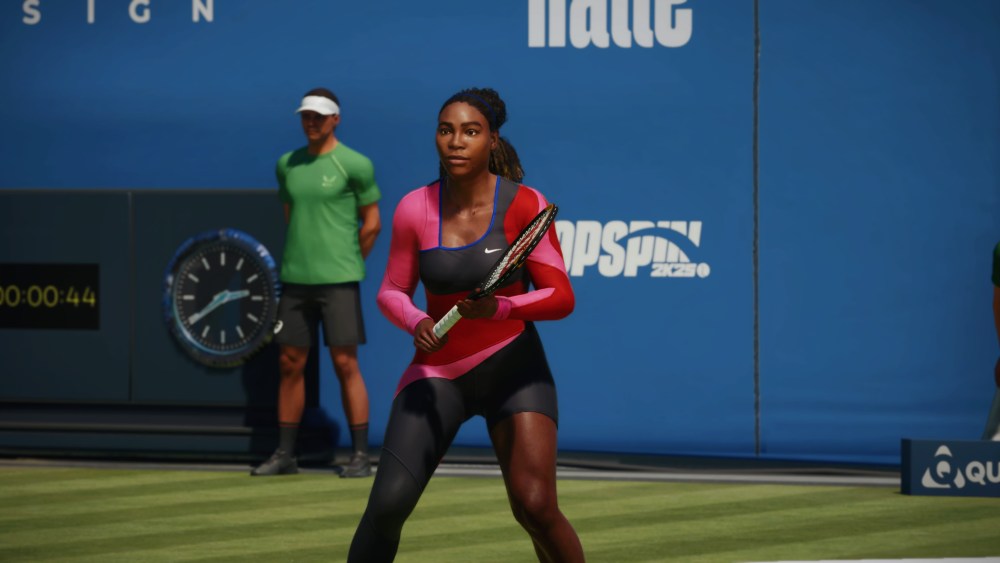
As you might expect, It mostly impresses with the same kind of satisfying action on the court that established the reputation of the series, routinely rewarding you for good input and punishing you in turn for the mistakes that you make.
When you’re just starting out, the game’s tutorial mode that’s narrated by the fiery John McEnroe does an admirable job of teaching you how to transform your racket into a weapon on the court. The gameplay doesn’t try to re-invent the wheel and instead leans on what made TopSpin 4 such a success, giving you access to a variety of shot types that are easy enough to grasp for beginners, but they come with a skill gap that’s formed from strategy, execution, and reaction time. You can also enjoy the thrill of stepping into the shoes of some real pros who look and play a decent amount like they do in real life on courts that are refreshingly accurate and brimming with detail. There are enjoyable online modes for both of those experiences as well, where you can see how your created MyPlayer fares against others in a tournament format or control real pros in either a highly competitive or more casual framework.
There are some issues and details that could have been done better in the game, but most of these thankfully fall more in the category of nitpicks than anything major that threatens to derail the entire experience. The MyPlayer allows you to create, customize, and progress your own player over the course of a MyCareer mode where you’re playing training sessions and events, but its grind suffers from a multitude of drawbacks that it can’t quite overcome. It would be nice to see more of those aforementioned pros within the game at launch too, but there’s already been talk of having more added in the coming months without the need for microtransactions to gain access to them.
Here’s a closer look at which aspects of TopSpin 2K25 are indisputable smashes and where the game might be making some unforced errors that can hopefully be rectified.
What I Like
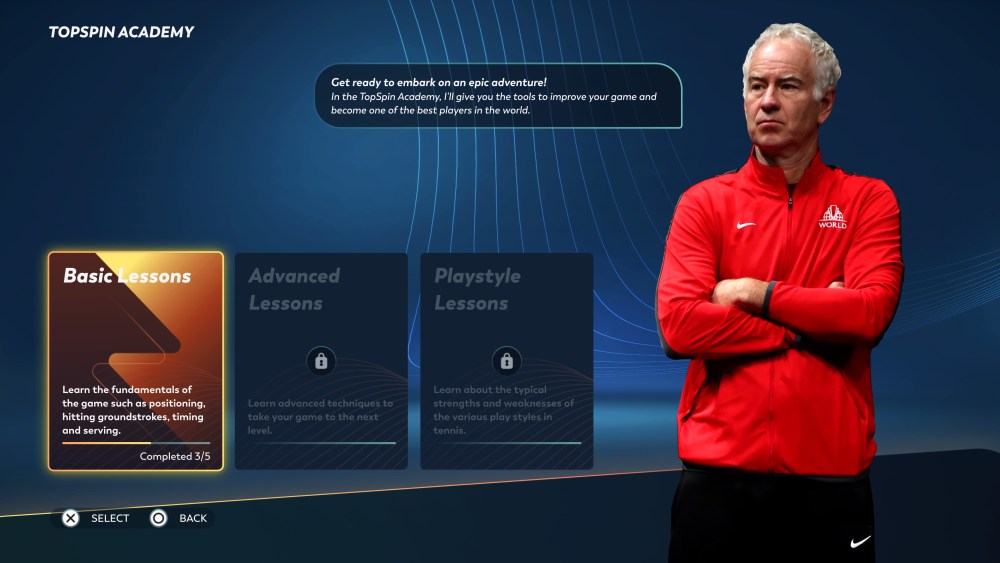
TopSpin Academy
Since any budding tennis phenom needs the right coach to steer his career in the right direction, it’s hard to think of anyone better than the legendary John McEnroe to serve as the voice of the game’s TopSpin Academy tutorial. Johnny Mac lays out a series of lessons that all start with a video describing the concept you’ll be learning before having you apply that newly acquired knowledge in a drill. Though you’ll likely make mistakes at first, you should slowly begin to grasp what you’re doing wrong and be able to correct those errors to complete each lesson.
The skills you obtain build in their complexity, starting with the basics of how to move and hit the ball, progressing to more advanced techniques like how to inside out the ball and various playstyles to employ on the court. While McEnroe doesn’t really display any of the quick temper that he often let loose on officials in his prime, he can’t help but inspire you to do better when imploring you to get after the next ball, lest you tempt fate and have him fly off the handle should you do badly.
Gameplay
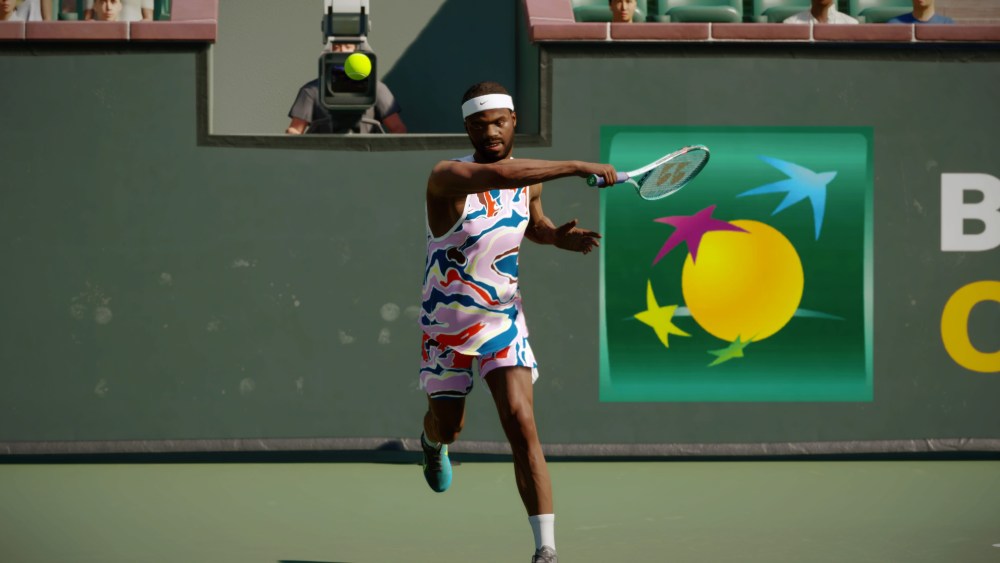
At the heart of what makes TopSpin 2K25 work so well is how you have to use both your stick skills and your brain if you want to win a point. That starts with the serve, which requires you to be precise with a crosshair as well as with a meter in order to place the ball perfectly with enough speed to generate an ace. Even if you can master the two together, there’s a little bit of RNG tied to your player’s serve attribute that can potentially induce a fault.
Throughout a point, you’re able to unleash a variety of shot types, including flat shots, top spins, slices, lobs, and drop shots. There’s also the option to hit each of these as control shots, normal shots, or power shots, which all depends on how long you hold down the button. The accuracy of your shots rests on your positioning and releasing your shot button at the optimal time according to a meter. You’ll need to be judicious about executing power shots, as the time required to load these up are usually due to a slow and poor shot from your opponent who’s giving you a chance to put the point away.
Of course, there’s also the possibility of charging the net at any time to try and win a point with volleys rather than only hammering the ball from the baseline. When playing at the net, you obviously won’t have the time to charge up any of your volleys, so thankfully the game has you instead execute normal, control, drop, or power volleys using different buttons. The counter to an opponent trying to dominate you at the net is to sail a well-placed lob over their head and watch them scurry back to the baseline to attempt a return.
It’s imperative that you’re also aware of how much energy you’re expending while you cover the court, as exhausting your gauge in a rally can sometimes be the difference between getting to a ball or not and whether you can apply some extra force into a return.
With all these shot options, it’s undeniably fun to try to anticipate your opponent’s next move and get yourself in the ideal spot to send the ball back over the net. If you manage to catch them off-guard or in the wrong position, it will lead to unforced errors like the ball sailing into the net or out — if they’re even able to get to the ball at all.
Online Play
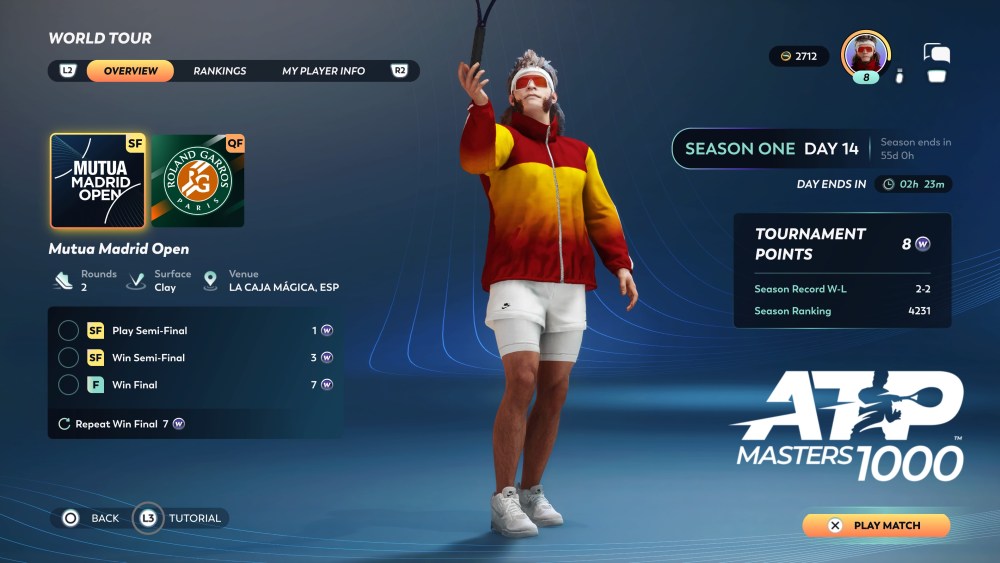
When you’ve grown comfortable enough against a CPU opponent to increase their difficulty from normal to hard, it might be time to think about taking your talents online and see how you fare against other real people. Thankfully, there are a few options to satisfy those competitive desires. World Tour is where you can bring your MyPlayer and enter in online tournaments against other MyPlayers. There are a couple of tournaments available to you during the week and a third on the weekend. The further you’re able to advance in each tourney, the more tournament points you’ll earn as rewards, which will help you climb the online rankings. The good thing is that if you lose, you can just start the tournament over and see if you can do better (you can also win tournaments multiple times).
Online matches work pretty well, though the matchmaking is somewhat flawed in how it can often force you to face someone whose MyPlayer has way better attributes than your own. When your opponent’s level is much higher, it can often feel as if you’re a teenage amateur in an unfair draw against Roger Federer in his prime. The mode could really benefit from tiers that you can ascend to have you playing opponents mostly around the same skill level as your own so you don’t feel so outmatched as often. It seems like it’s nearly impossible to stay anywhere near the top of the mode’s rankings if you don’t play the game so often that it might as well be a full-time job. It’s not even entirely clear either what the actual reward is for accumulating tournament points besides the bragging rights of being atop a leaderboard. I’ve also encountered quite a few times where the game flashed an alert indicating either myself or my opponent had a bad connection (when mine is definitely fine and fast), though any lag on my end in these cases has been minimal or nonexistent.
If you’d rather avoid the unbalanced matchups that can occur when using your MyPlayer, you might want to try the slightly more chill 2K Tour mode instead. You’ll be playing there with a real pro of your choosing, thereby all but ensuring that you’re on even ground with your opponent unless, for some reason, you select a lesser pro. In general, the mode works similar to World Tour except there aren’t any tournaments to win so you’ll be earning 2K Tour points rather than tournament points in climbing the rankings.
Graphics & Presentation
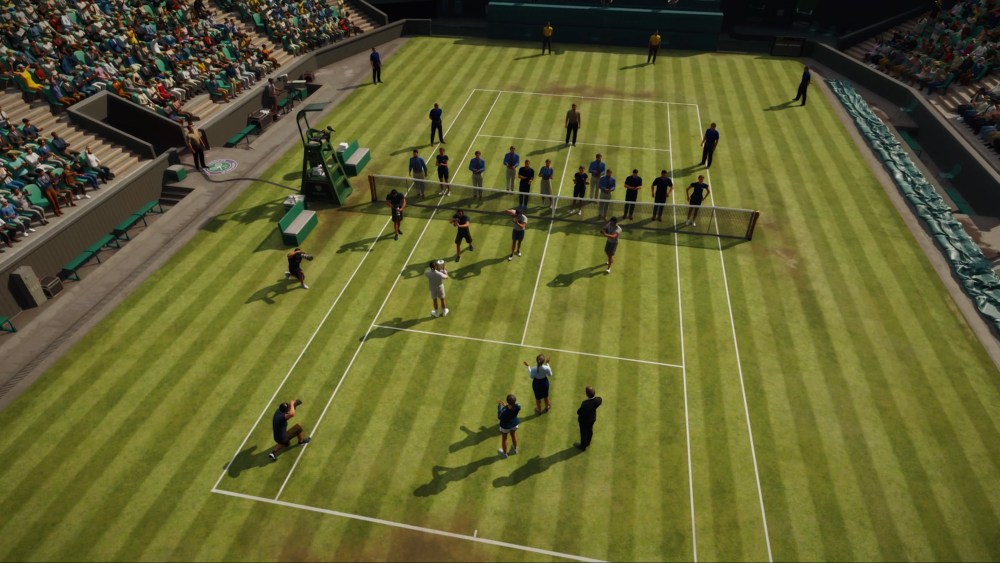
While the graphics of the players during a match might initially look as if they could be from a last-gen game in Top Spin 2K25, it’s the finer details that start to impress. The gorgeously rendered courts and vibrant environments, for example, really help to breathe life into the atmosphere of wherever you’re playing. Shadows will hover and move across the playing surface depending on what time of day you happen to be playing. There are lots of cutaways to the lively crowd to help punctuate any key points or dramatic moments that happen.
The animations of the players and their momentum on the court achieve a welcome sense of realism, allowing them to sprint and reach for balls without feeling as if they’re teleporting or sliding too much. Even at the net when the action can get plenty hectic in a battle of volleys, the animations display enough variety to rarely seem too awkward or forced. It’s exciting to see players celebrating with a fist pump after winning points, falling to the ground after long rallies and basking in the adoration of the crowd at the end of matches in which they’ve come out victorious.
What I Don’t Like
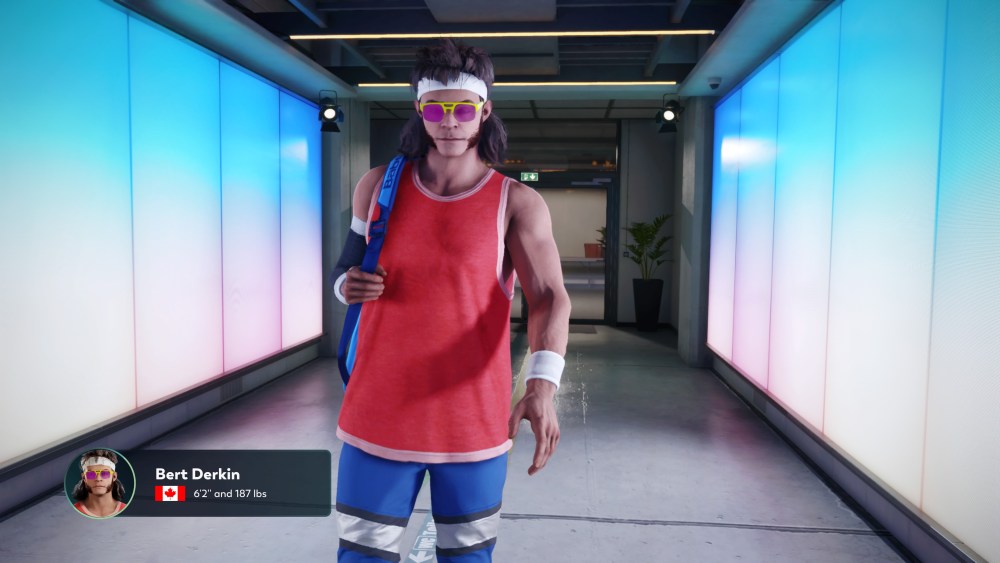
MyPlayer & MyCareer
MyCareer is a decidedly mixed bag, but there are ultimately too many glaring flaws that threaten to sink the entire enterprise. Launching your own career as a tennis champion begins with first creating a MyPlayer that you can customize using a suite that allows you to manipulate their appearance and attire. While this isn’t all that different from other sports games, some of the more unique aspects you can choose in the game are your player’s animations and how they sound when they grunt during particularly intense swings. To set yourself further apart from other players, you can always purchase items from scores of reputable brands in the game’s Pro Shop using virtual currency or unlock some in the Centre Court Pass, the game’s version of a battle pass that will be updated each season every couple of months or so.
In the early stages of your career, you’ll naturally have low attributes across the board and find yourself sitting at the bottom of the rankings. You can improve your player by ascending levels through accruing XP that you’ll get by playing training sessions, special events, and tournaments. With each level that you ascend, you’ll receive six attribute points that you can apply to whichever ones you prioritize, building a player that best suits your own playstyle. It’s nice that you can choose from different scoring formats for the tournaments, making each match as short as a tiebreaker or as long as the full sets you see the pros play. You’ll receive more XP and VC rewards if you use longer scoring formats just as you will for playing on higher difficulties.
To add to the mode’s depth, there are also coaches that you can hire and progress by completing challenges, support team members that will aid you in different areas of your career, and fittings that you’ll eventually unlock and apply to improve your abilities further.
It’s a little unfortunate though that due to a lack of real and fictional players most tournaments have you starting in the quarterfinals round, only requiring you to play three rounds in order to be declared champion. The MyCareer mode’s energy system could definitely use some tweaking, as you’ll often find your player tired enough that they’ll need to sit out every second or third tournament or else risk suffering a minor or major injury.
Since you can only play in one every month as it is, that means you can only compete in a limited number of tourneys each year. Granted, you can help your player recover energy faster by purchasing homes across the world, but it stills feels like you’re missing out on too many opportunities while resting. Another fault to the mode is an annoying glitch to your player’s progression status that can force you to repeat the same challenges rather than moving on to new ones. This relegates you to playing in lesser tournaments when your ranking would indicate you’re ready for the majors. You aren’t even able to enjoy MyCareer offline when the servers are down either, which is a galling inconvenience.
Pro Roster
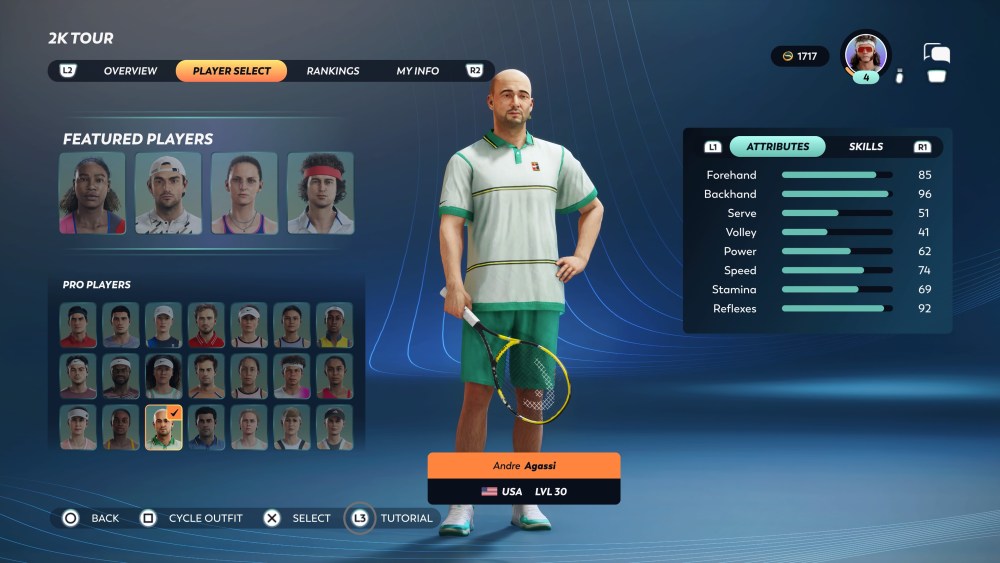
One of the biggest issues with the game has to be how thin the roster of real pros is that you can use in matches. While the Tiebreak game boasts the kind of robust number of players you’d expect from its official affiliation, the list of players in Top Spin 2K25 can’t help but pale in comparison. Sure, there are some big names included like Serena Williams, Roger Federer, and Carlos Alcaraz, but there are also some notable omissions like Novak Djokovic. Though you do also get the chance to control some legendary names from the past such as your aforementioned teacher John McEnroe and Andre Agassi, that doesn’t entirely make you forget that there are still only 26 pro players available at launch.
There have been assurances that more players will be added in the near future (along with missing modes like Play With A Friend) and that they will be free to access, but there’s nevertheless some disappointment in what we have here at the outset. Some of this “pain” could have been avoided if we were allowed to create and share pros online, and it would have been further alleviated if we could have added these created pros to our career modes to bolster the field, but none of that exists here.
Bottom Line
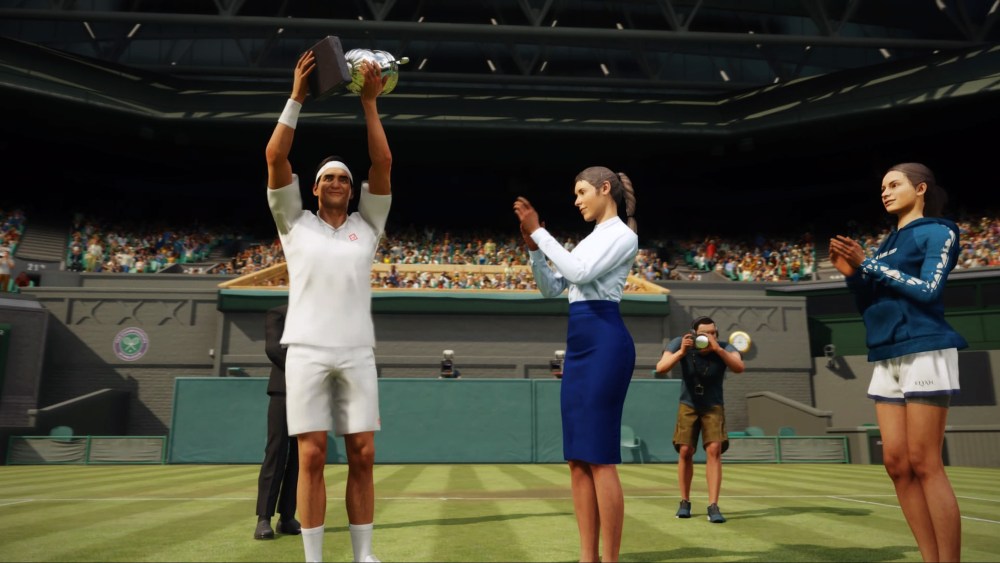
Despite it being more than a decade since the release of the celebrated Top Spin 4, TopSpin 2K25 carries on its vaunted legacy by building off its predecessor’s successful formula. Once you’ve grasped the fundamentals of John McEnroe’s helpful lessons, you’ll find that the blueprint for winning each point through outsmarting and outmaneuvering your opponent makes for a rewarding and challenging experience with all of the tools at your disposal. The game’s online modes give you plenty of ways to test your abilities against others but could perhaps use a better framework to add balance and proper compensation for your efforts. All of the on-court action is faithfully brought to life with sharp graphics and animations, especially when it comes to the spirited stadiums.
The MyCareer mode is bogged down by too many faulty mechanics that affect how your quest for greatness unfolds, though it’s still fulfilling to customize your player’s appearance in myriad ways and progress their strengths (and weaknesses) to meet your own preferences. The roster of professional players that you’re able to assume control of in various modes, however, is a little light at launch and will hopefully look a little better once supplemented with some other high-profile names in future updates.


